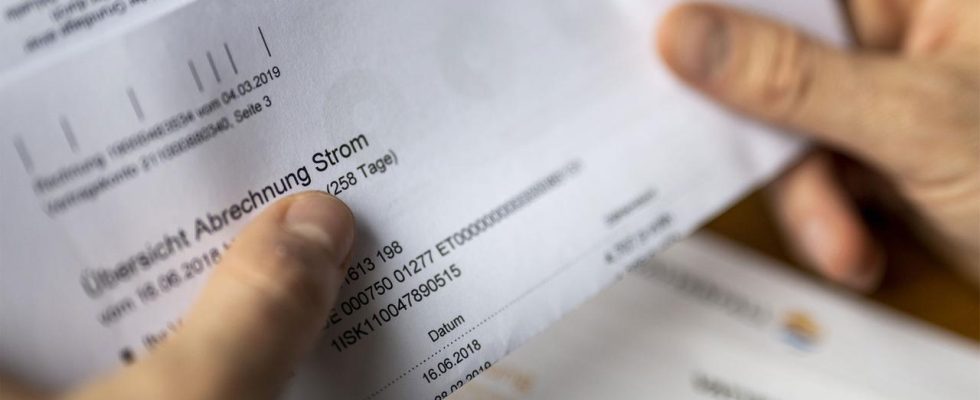Electricity and gas prices continue to fall – consumer advocates recommend comparing tariffs. The prices of some providers are therefore sometimes well below the energy price brakes.
After last year’s electricity and gas price shocks, the situation for household customers has improved again. Consumers can now switch back to providers whose prices are sometimes well below the energy price brakes for electricity of 40 cents per kilowatt hour (kWh) and gas of 12 cents per kWh.
Electricity prices have been falling since December 2022
“Household electricity prices for new customers have fallen continuously since December 2022,” said electricity market expert Mirko Schlossarczyk from the consulting firm Enervis. Current offers are less than 30 cents per kilowatt hour.
“For existing customers and in the basic service, however, the price level is noticeably higher and is currently just over 40 cents,” says Schlossarczyk. These prices have fallen only slightly in recent months.
The causes of the price drop
The main reason for the decline in end consumer electricity prices is the significantly lower wholesale prices on the electricity exchanges. In particular, the enormous drop in the gas price on the spot market, which is now below the level before the war against Ukraine, plays a decisive role. Another factor is the weather-related increase in the proportion of cost-effective electricity feed-in from wind energy and solar systems.
Despite the reductions, according to the comparison portal Check24, 76 percent of the electricity tariffs for the basic suppliers, i.e. the providers in a region with the most customers, are still above the electricity price brake. In the alternative supply, on the other hand, 88 percent of the tariffs are already cheaper than the price brake.
Trend towards price reductions too basic providers
With an annual consumption of 5000 kilowatt hours, new customers currently pay an average of 31.4 cents per kilowatt hour with alternative suppliers. In the basic service, on the other hand, it is 43.2 cents. For comparison: According to the energy industry association BDEW, the average electricity price in Germany in June 2021 was just under 32 cents.
According to the comparison portal Verivox, there is also a clear trend towards price reductions among basic suppliers. For the months of June, July and August, 94 electricity price reductions averaging 12 percent were registered, but there were also nine price increases averaging 36 percent.
For the coming months, expert Schlossarczyk expects continued low prices for new customers and noticeable price reductions for existing customers and customers in the basic service.
price differences for consumers bigger than ever
At the moment the price differences for gas and electricity are bigger than ever. According to its own statements, Verivox had evaluated energy price data for the past ten years. The difference between the average basic supply tariffs of the local suppliers and the cheapest offers for new customers is therefore 760 euros for a model household with 4000 kWh electricity consumption per year. With gas it is even 1391 euros per year. A model household in a single-family house with an annual consumption of 20,000 kilowatt hours was used here.
“The reasons for the price differences in the end consumer prices lie in the procurement strategy of the energy suppliers,” explained Verivox energy expert Thorsten Storck. “Many of the companies are still struggling with the record wholesale prices that were due in 2022. In addition, government support in the form of price brakes is dampening the price pressure.”
The large price differences are a “clear sign” that lower procurement costs for national new customer offers are passed on to households more quickly, Storck explained.
Gas prices are also falling
According to Verivox, gas prices are also falling. In the basic service, the portal has so far registered 75 price reductions by an average of 17 percent for June, July and August. Nevertheless, 90 percent of the gas tariffs in the basic supply are still above the gas price brake.
On average, consumers there pay 13.3 cents per kWh of natural gas, while it is already 9.4 cents in the alternative supply. Already 80 percent of the tariffs in the alternative supply are cheaper than the price brake. According to BDEW, the average gas price in Germany in June 2021, i.e. before the start of the energy crisis, was a good six cents per kilowatt hour.
consumer advocates advise to provider change
Due to the enormous price differences, consumer advocates advise comparing the current tariffs and changing providers if necessary. Not only discounters are currently around the corner with low prices, but also municipal utilities or sales brands of municipal utilities. “If you want to remain loyal to the municipal utility, then you can first look around for special tariffs at the municipal utility,” said Christina Wallraf, the energy expert at the consumer center in North Rhine-Westphalia.
Almost every basic supplier has special tariffs, which are usually cheaper than the basic supply tariff. Anyone who wants to change should critically examine the existing contract. It is important to find out the remaining term and notice period in order to find the right time to change providers. “If you are currently in the basic service, the contract can be terminated at any time, taking into account the statutory two-week period,” Wallraff explained.
The energy expert emphasized that there are now more offers for night storage and heat pump electricity customers, after only very few providers had advertised for new customers at times last year.

